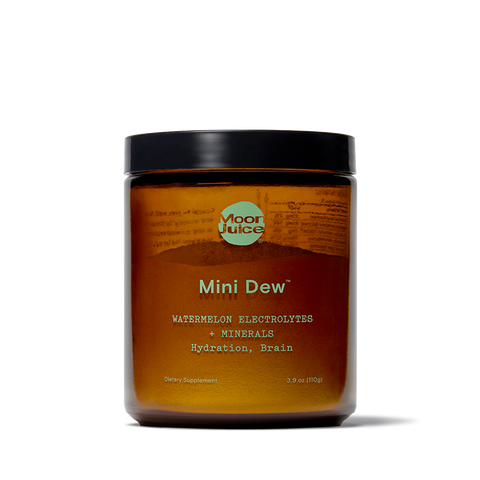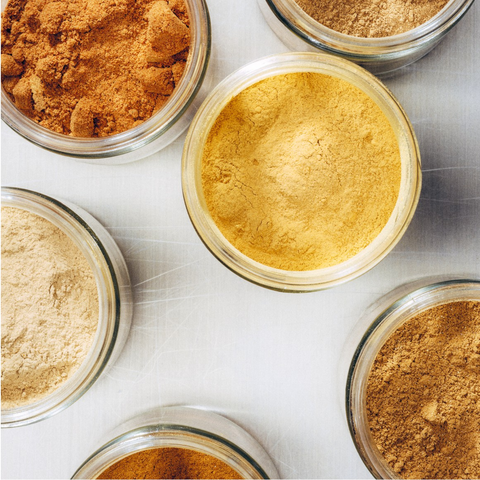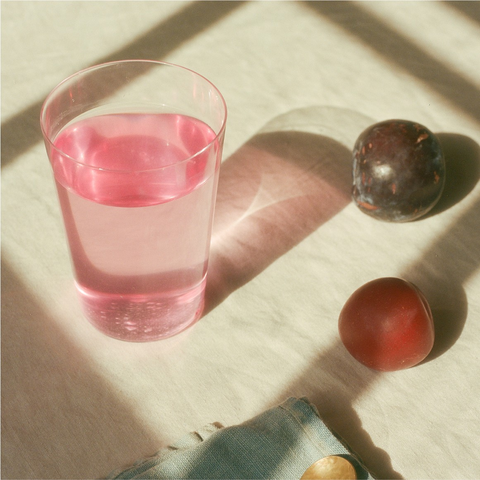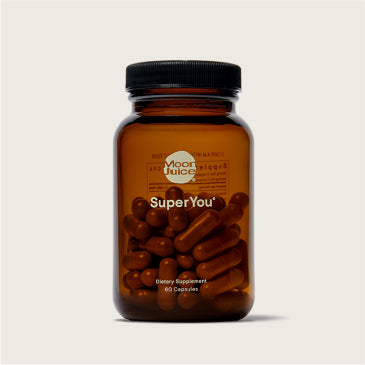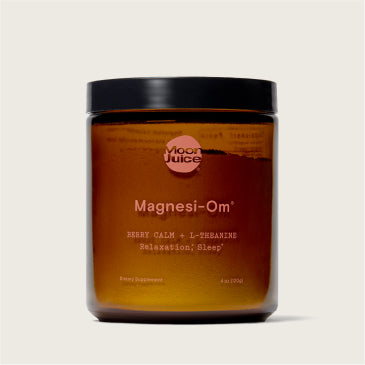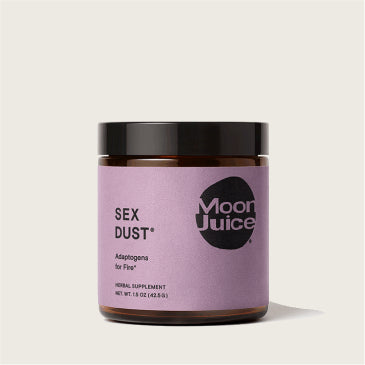Set apart from regular table salt by its pleasant pink hue and distinctive taste, pink Himalayan salt is a culinary ingredient that’s prized all over the world. Originating from the salt mines in the foothills of the Himalayas, this natural pink salt is millions of years old, formed before human pollution and microplastics infiltrated the sea. But it’s more than just its beautiful color and provenance that makes pink salt so sought after. Thanks to its rich mineral composition, it supports a range of health benefits, from promoting hydration and balancing electrolytes to potentially enhancing respiratory health.
As we discuss Himalayan sea salt benefits, the first thing to know is that while it’s technically mined from ancient sea beds, this isn’t really a sea salt, as it isn’t processed from seawater. Instead, this ancient salt comes from seas that no longer exist, formed long before humans and our pollutive waste entered the scene. When comparing Himalayan salt vs sea salt, it's clear that Himalayan salt offers a unique mineral profile and historical purity.
So is Himalayan salt good for you? If you’re wondering whether the pink stuff is worth the extra cost, read on to learn more about Himalayan salt benefits.
Rich in Minerals
First, let’s go back to basics. Salt is a mineral made of about 98% percent sodium chloride. It’s made by evaporating salt water or mining salt in its solid form from mines. Regular table salt is refined to remove impurities and other naturally occurring minerals besides sodium chloride, although it’s common for iodine or anti-caking ingredients to be added.
Himalayan salt benefits come from its rich mineral content. Mined from ancient sea beds near the Himalayan mountains in Pakistan, this pink salt is a gorgeous rosy-colored mineral that’s hand-harvested and minimally processed. The result is an unrefined rock salt that’s more natural and that retains more essential minerals without additives.
In fact, there may be up to 84 Himalayan salt minerals, including Calcium, Potassium, Magnesium, and Iron. These important nutrients are essential for health and have a variety of benefits in your body, from nerve function to muscle relaxation.
Why do we care? 90% of the U.S. has a mineral imbalance or deficiency. This can manifest as brain fog, fatigue, low mood, and PMS. Due to soil depletion from modern agricultural practices, it’s hard to replenish through food alone, so every little bit we get in our diet throughout the day can help.
Maintains Hydration Levels
It might seem counterintuitive since salty foods can make you thirsty, but we all need salt to stay properly hydrated. That’s because cellular hydration is a balance game. Sodium helps draw water into your cells, balancing fluids through osmosis.
Himalayan crystal salt is also considered more hydrating due to its impressive mineral composition. One of the key minerals in Himalayan salt is Potassium, which plays a crucial role in maintaining proper fluid balance in the body. As an electrolyte, Potassium helps conduct electrical impulses in your system and regulate your body’s water balance. It’s responsible for maintaining fluid volumes within the cell, which is why electrolytes for hydration are so important.
Long story short, your body needs more than just water to stay properly hydrated. Important electrolytes found in Himalayan pink salt are vital for your body’s cellular balance of fluids. Sodium and Potassium, in particular, play a critical role in keeping you quenched. Incorporating a small amount of salt in water for hydration can help maintain optimal fluid balance.
That’s important because hydration itself is hugely important for many aspects of health, from digestion to skin health to energy to brain function. If you’ve been having headaches or fogginess, for instance, a thirsty brain could be to blame. Dehydration can actually shrink the brain, and just a 2% drop in hydration has been shown to disrupt neurotransmitter function. Because the brain is mostly made up of water, staying hydrated is key for mental stamina, focus, and energy.
Supports Electrolyte Balance
Several of the nutrients contained in pink Himalayan salt happen to be important electrolytes—essential minerals that carry an electric charge when dissolved in water. Electrolytes are maybe most well known for those hydration benefits already discussed, but they’re also crucial for many other functions in the body. So, what are the benefits of drinking electrolytes exactly? They’re important for nerve function, muscle contraction and relaxation, cellular communication, exercise performance, blood pressure regulation, and heartbeat.
The following are a few of the top electrolytes found in Himalayan crystal salt.
- Along with keeping you hydrated, Sodium is important for basic functions like contracting muscles and controlling nerve impulses. Since Sodium is found in abundance in salty foods, you typically don’t need to seek it out. But if you’ve lost a lot of fluids due to sweating or sickness, Sodium is one of the electrolytes that can become depleted.
- Potassium, another familiar mineral, is present in all your body’s tissues. Like Sodium, it’s important for muscle contraction and nerve transmission, along with kidney function. Sodium and Potassium have an inverse effect on your blood pressure. This mineral is considered an essential mineral of public concern because many people don’t get enough through their diet.
- Your body also needs Calcium for proper nerve and muscle movement. It’s the most abundant mineral in your body, stored primarily in your bones and teeth to give them strength and structure.
- Magnesium is an important mineral needed by every cell in your body. It plays a part in over 300 enzymatic functions. Some of the most common benefits of Magnesium include supporting nerve conduction, muscle activity, making protein and DNA, soothing your body for sleep, and converting food into energy. Over 50% of Americans don’t get enough Magnesium through their diet.
Electrolytes are popular in sports drinks, travel or hangover supplements, and tonics when kids get sick, because we lose electrolytes when we expel bodily fluids. But many electrolyte drinks are full of sugar or other unwanted ingredients, so it’s wise to check the labels. Look for electrolyte drinks that rehydrate you with natural, safe ingredients.
May Help to Detoxify the Body
An intriguing claim about Himalayan sea salt is its supposed detoxifying properties. Some proponents suggest that the salt’s mineral content can help draw out toxins from the body through the skin. This idea has led to the popularity of Himalayan salt baths, where the rock salt is dissolved in warm water for a relaxing and potentially detoxifying soak. While more research is needed to fully understand the extent of its detoxifying effects, many people report feeling rejuvenated and refreshed after indulging in this practice.
May Improve Digestion
Another benefit that’s sometimes attributed to Himalayan sea pink salt is its potential for improved digestion. Some suggest that the essential mineral profile in this salt may help stimulate stomach acid production, which is essential for proper digestion. Additionally, the salt may help balance the pH levels in the stomach, aiding in the breakdown of food. But it’s important to note that individual responses to salt intake can vary, and excessive consumption should be avoided, especially if you have certain health concerns.
Enjoy the Benefits of Himalayan Salt
If you’re inspired to consume more pink Himalayan sea salt, incorporating it into your daily routine is simple. You can start by replacing your regular table salt with Himalayan pink salt in your cooking to impart a distinct flavor profile to your dishes. You can also use it to season foods after cooking or as a finishing touch to salads and dishes. For a relaxing and maybe even detoxifying soak, try adding Himalayan pink salt to your bathwater and melt away the stresses of the day.
If you’re looking for a way to support your hydration and replace vital nutrients, Mini Dew™ is a 2-in-1 mineral supplement and electrolyte powder mix that tastes like organic watermelon or pomelo, a pinch of minerals, and a dash of pink salt. It instantly dissolves in water with zero sugar to support optimal hydration without the junk.

Takeaways
Himalayan salt has captivated the interest of culinary experts and wellness practitioners alike. Its rosy pink hue, rich mineral composition, and potential health benefits set this salt apart from conventional table salts, offering us a unique addition to our kitchen, bath, or wellness tonics.
While the scientific evidence supporting some of the health claims about Himalayan pink salt is still evolving, its mineral content alone makes it a compelling alternative to refined table salt that’s been stripped and processed with additives. The presence of trace elements and vital minerals like Potassium, Magnesium, and Calcium not only adds flavor but also contributes to potential health benefits like improved hydration, electrolyte balance, and even skin health.
One of the more enticing aspects of this ancient salt is its versatility. From culinary applications to spa time, the salt offers a range of uses that can enhance the taste of food or the quality of self-care rituals. Use it in cooking, as a finishing touch on dishes, or dissolved in a warm bath to explore and experiment.
Mini Dew™ is a great way to introduce a pinch of Himalayan pink salt into your wellness routine to replenish electrolytes and rehydrate. This microplastic-free pink salt electrolyte powder supports optimal hydration by maintaining water balance in and around cells. Ionic trace minerals give the body the elements it needs to feel good and energized while chelated essential minerals enhance cognitive performance and help reduce brain fog.
Whether you’re looking to support your electrolytes, enhance your favorite foods, explore natural alternatives to regular salt, or just indulge in a sumptuous bath, Himalayan pink salt is an enriching option. Sprinkle, season, and soak in bliss.
Sources
- Dietary Guidelines for Americans. Home page. https://www.dietaryguidelines.gov
- National Library of Medicine. Recommended Dietary Allowances for Water and Electrolytes. https://www.ncbi.nlm.nih.gov/books/NBK234935/
- Peruzzo, Mattia et al. “Body fluids and salt metabolism - part II.” Italian journal of pediatrics vol. 36,1 78. 13 Dec. 2010, doi:10.1186/1824-7288-36-78. https://www.ncbi.nlm.nih.gov/pmc/articles/PMC3022615/
- Ray, M L et al. “Effect of sodium in a rehydration beverage when consumed as a fluid or meal.” Journal of applied physiology (Bethesda, Md. : 1985) vol. 85,4 (1998): 1329-36. doi:10.1152/jappl.1998.85.4.1329. https://pubmed.ncbi.nlm.nih.gov/9760324/





